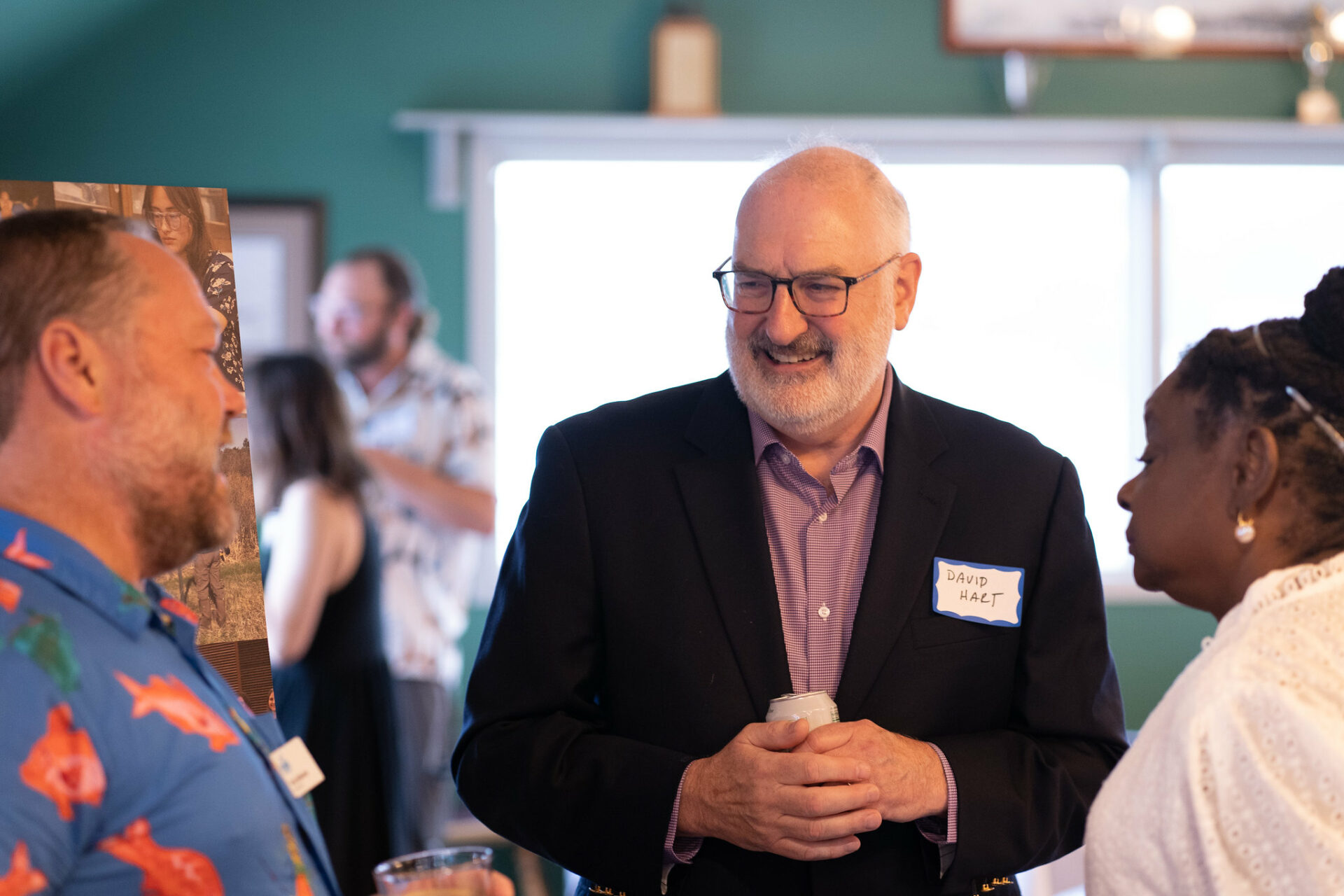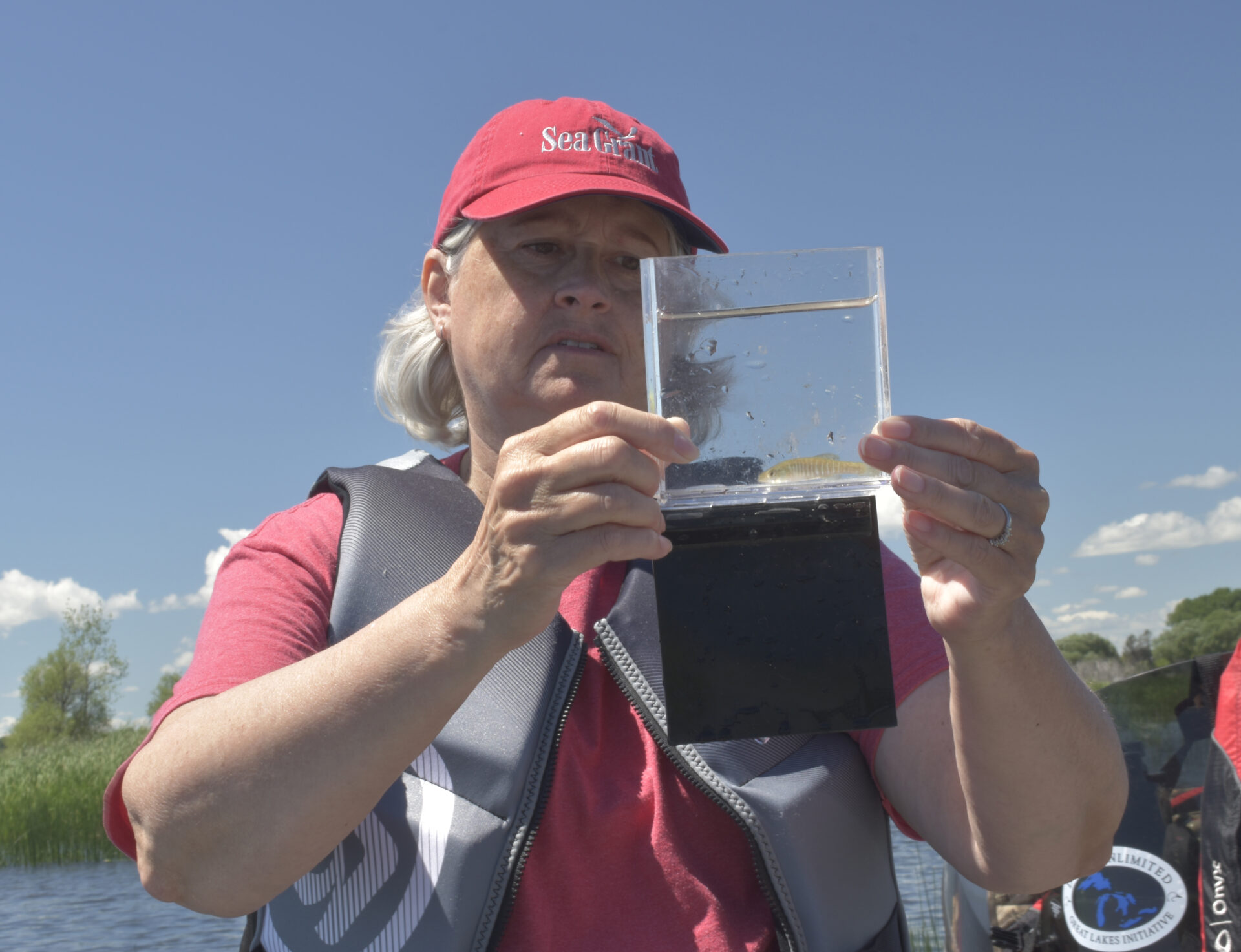Those who meet and work with Phil Moy are often struck by his height, his piercing stare and his occasionally blunt demeanor. In the 15 years he’s worked with Wisconsin Sea Grant, first as a fisheries specialist in the organization’s Manitowoc office, then as outreach coordinator and assistant director for research, few had reached out to create as many partnerships and build as many bridges as Moy had.
Moy leaves Sea Grant in mid-May to take a job with Smith-Root Inc., a Vancouver, Wash.-based company that designs, among other things, the technology that powers the electrical barrier currently working to keep the invasive Asian carp out of the Chicago Area Waterway System and the Great Lakes. It’s an appropriate career move. Moy spent time in the early 1990s working with the U.S. Army Corps of Engineers, the governmental agency charged with monitoring the barrier and solving the carp problem. With Smith-Root, he’ll work to link academic researchers with the products his company produces.
Controlling aquatic invasive species (AIS)—please don’t call them “invasives,” said Moy —has been the centerpiece of Moy’s time with Sea Grant. For his first field assignment, then Advisory Services Director Al Miller sent him to West Bend to untangle an expert-related territorial dispute that had resulted in Minnesota Sea Grant Aquatic Invasive Species Program Coordinator Doug Jensen being invited to address a Wisconsin group on the burgeoning invasion of zebra mussels into Wisconsin’s lakes.
Moy recalled accosting Jensen in the parking lot afterward.
“‘I’ve got to tell you, Doug—you’re never to come back to Wisconsin,’” Moy said. “‘Now, let’s go have a beer.’” The two would spend the next decade-plus working together on countless AIS projects.
It’s that dry sense of humor that many people will recognize. Moy was also easily the most–traveled member of the Sea Grant staff, racking up the miles as he visited four countries (US, Canada, Ireland, Norway), two provinces (Ontario, Quebec), 33 states and Washington, D.C. on invasive species and fisheries issues—and leading to a popular “Where’s Phil?” series on social media.
Moy presided over the selection and hiring of a new wave of young and up-and-coming outreach specialists: Tim Campbell (aquatic invasive species), Titus Seilheimer (fisheries), Julia Noordyk (coastal communities) and Jane Harrison (the organization’s first social scientist).
“Phil will always have an important place in my life because he gave me my first ‘real’ job,” said Seilheimer, who joined Sea Grant in 2013. “Phil looked at my research background and saw potential there. I’m now making a place for myself in Wisconsin’s aquatic community.”
“Phil is Wisconsin Sea Grant to a lot of people,” Campbell said. “When I first started here, I had a lot of people ask me, ‘Are you the new Phil Moy?’ Phil did so much stuff for us—I usually told them I’m not even half of a new Phil.”
Moy was born in Washington, D.C., where his father worked for the National Institutes of Health and his mother was a teacher. Moy’s family moved to the Midwest, where, after getting a degree from Southern Illinois University, he ended up working with the Illinois Natural History Survey and the Corps before migrating to Sea Grant.
“I really liked the Great Lakes,” Moy said. “Big waters, big fisheries and big problems.”
Moy enjoyed a lot of success, but his proudest triumph came in 2002, when he recruited Babe Winkelman, the famous TV angler, to partner with Sea Grant, using Winkelman’s celebrity and reach to further the fight against the spread of aquatic invasive species.
“It was really about reaching out to a different group of people on invasive species,” recalled Moy of the project. “This was a big deal. At the time, Babe was touting Eurasian water milfoil as good fish habitat. By the time we were done talking to him, he had done a complete about-face.”
The 30-second ad Winkelman produced with Sea Grant achieved a massive reach by any historical standards: More than 17 million people viewed it. When it came time to report the project’s impact to NOAA, Moy found that the reporting system wouldn’t recognize a figure that high.
“We blew it up,” he said.
Moy’s also proud of the work he did in bringing constituencies together to create a new ballast water policy for the Great Lakes Panel on Aquatic Nuisance Species. It’s the first project that connected him to shippers and carriers, two groups that recognized their ships’ ballast waters represented a potential vector for AIS spread—but also had some concerns of their own.
“They were concerned about biologists developing policies that could hurt their business,” said Moy. “Something had to be done, but you couldn’t expect immediate compliance.”
Instead, Moy helped the groups hammer out some formative ballast-water guidelines the state of New York eventually put into place.
His closing touch for Sea Grant has been helming a project designed to teach national fishing tournament organizers ways they can help prevent the spread of AIS. Working with Great Lakes Sea Grant programs and tournament heavy hitters like Cabela’s and The Bass Federation, Moy has reached one of the constituencies best placed to make a difference.
“It’s really about recognizing the species du jour—identifying what’s going to grab people’s attention” said Moy. “The round goby doesn’t clog pipes or cut your feet when you walk on the beach. Carp are big, and they jump out of the water, hurt people and break things.”
Aquatic Sciences Director Jim Hurley said, “With Phil’s departure, a lot of Sea Grant history departs. We are grateful for his contributions to a more sustainable Great Lakes basin through his years with us. It’s good to know that he’ll bring his deep knowledge of complex ecosystems to a company that addresses such issues around the globe.”
For his part, Moy said “I’ll miss you guys. There are good people here,” but that he plans to do what he did in the Midwest—get to know an area’s history and the ecology and then apply it for company projects around the world.
All the better to keep building bridges, and barriers.





